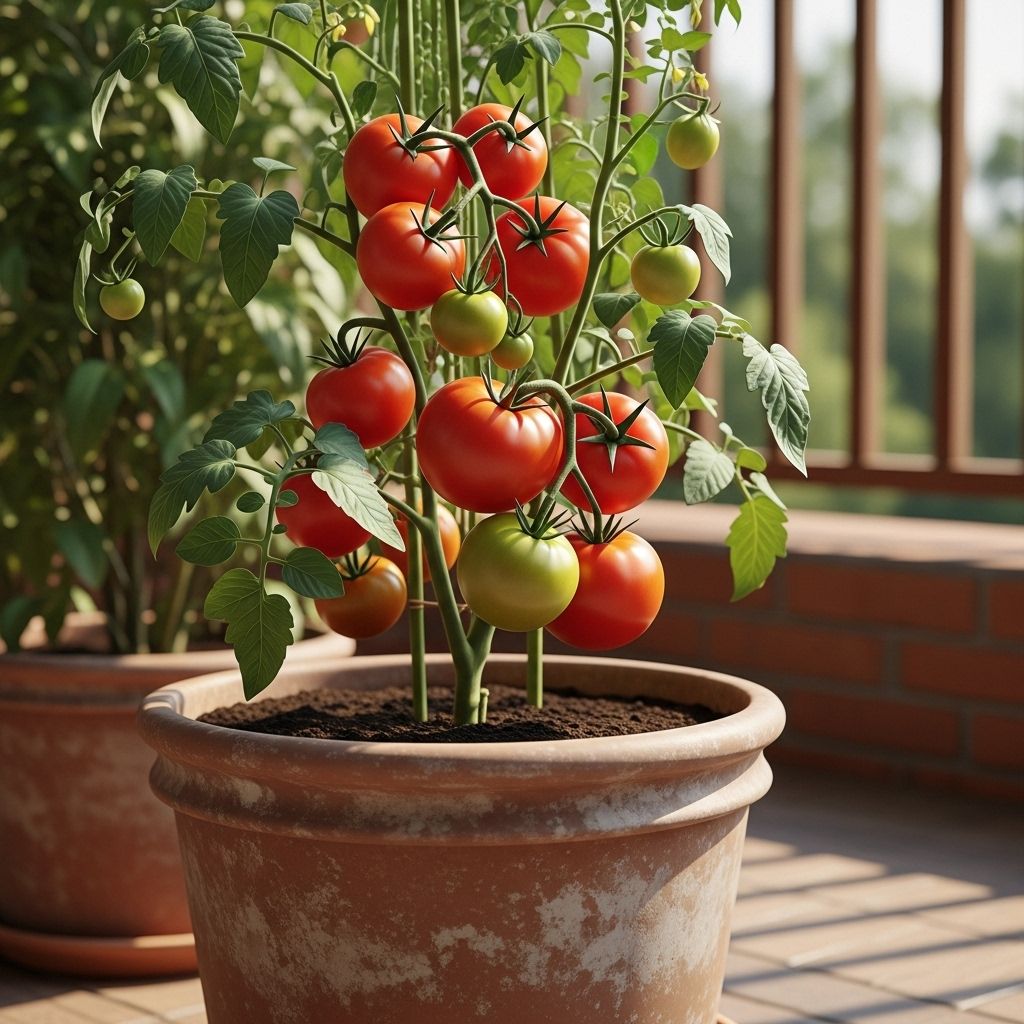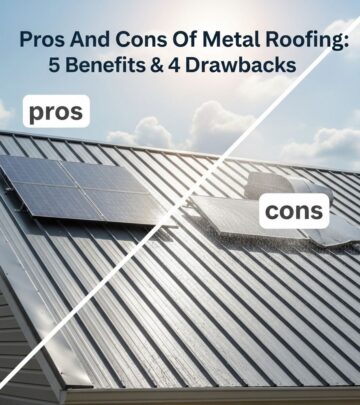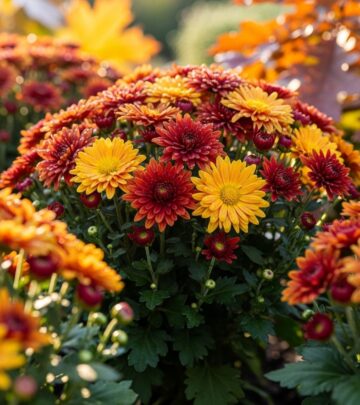How To Grow Tomatoes In Containers: 11 Tips For Bigger Harvest
Unlock vibrant, juicy harvests with smart tricks to master compact gardening success.

Image: HearthJunction Design Team
11 Expert Tips for Growing Tomatoes in Containers
Growing tomatoes in containers is an excellent way to enjoy fresh, homegrown tomatoes even if you lack a traditional garden space. With the right approach, you can harvest flavorful fruit from your patio, balcony, or deck. This comprehensive guide covers everything you need to know, from choosing the perfect container and soil mix to providing proper care and support for a healthy, productive tomato harvest.
Table of Contents
- Choose the Right Container
- Select the Best Tomato Varieties
- Use the Right Potting Soil
- Ensure Proper Drainage
- Plant Tomatoes Deeply
- Group Containers Together
- Add a Support System
- Water Consistently and Smartly
- Fertilize Regularly
- Provide Ample Sunlight
- Watch Out for Pests and Diseases
- Frequently Asked Questions
Choose the Right Container
The journey to bountiful container tomatoes begins with selecting an appropriately sized pot. Each tomato plant requires a container measuring at least 1 square foot in surface area or about 2 gallons in volume. However, bigger pots are always better. A container of around 2 square feet, or approximately 5 gallons, is ideal as it allows roots room to grow, retains moisture longer, and supports healthier plants.
- Material: Terra cotta, ceramic, plastic, or fabric grow bags all work. Fabric pots are praised for breathability and drainage.
- Size: For standard varieties, aim for at least 14” diameter but go up to 20” if possible for vigorous growth and bigger harvests.
- Drainage: Ensure containers have plenty of holes to prevent waterlogging; you can add more if necessary.
Select the Best Tomato Varieties for Containers
All tomatoes can technically be grown in containers, but some varieties are more suitable than others. Determinate (bush or patio) tomatoes are generally the best choice because they stay compact (3-4 feet tall), don’t require extensive staking, and set most of their fruit at once. Indeterminate (vining) tomatoes can also perform well if given a very large container and robust support.
- Determinate Varieties: Ideal for containers due to their size and predictable fruiting.
- Indeterminate Varieties: Can be grown if you have space for large containers and supports; they produce fruit continuously throughout the season.
- Dwarf or Patio Types: Breeders now offer many compact hybrids specifically for pots—look for “patio,” “bush,” or “miniature” in the name.
Use the Right Potting Soil
Never use garden or yard soil in containers, as it is typically too dense, drains poorly, and may harbor disease. Instead, fill your pots nearly to the rim (about 1 inch below) with a light, fluffy, high-quality potting mix formulated for containers. These commercial mixes often include peat moss, coir, perlite or vermiculite, and sometimes composted pine bark—ingredients that retain moisture yet allow excess water to drain freely.
- Benefits: Prevents root compaction, encourages vigorous root growth, and reduces risk of disease.
- Amendments: Consider mixing in slow-release organic fertilizer or amendments for an extra nutrient boost at planting.
- Depth: Fill to about 1 inch below the top rim to allow for easy watering and mulch addition later.
Ensure Proper Drainage
Tomatoes are extremely sensitive to soggy roots. Before filling your container, check that there are ample drainage holes. If not, drill additional holes in the bottom and lower sides. For even better results, place a layer of coarse gravel, broken pottery, or mesh at the bottom to keep holes clear, though with quality potting mix this step is optional.
- Tip: Elevating pots off the ground slightly can help excess water escape freely.
Plant Tomatoes Deeply
Unlike most vegetables, tomatoes should be buried deep when transplanted. Remove the lower set of leaves from your seedling, then plant it so that much of the stem is beneath the soil. Tomatoes can grow roots all along their stems, so deeper planting encourages stronger root systems and sturdier growth.
- How deep? Bury at least two-thirds of the stem below the surface.
- Result: Roots will develop along the buried stem, creating a robust support system for heavy fruiting.
Group Containers Together
While tomato leaves crave sunlight, their roots can overheat in summer if containers are exposed on all sides. Grouping pots close together provides shade for the root zones, helping keep them cool, slowing water evaporation, and simplifying your watering routine.
- Bonus: Grouping also creates a more humid microclimate, which benefits tomato plants in hot, dry weather.
Add a Support System
All but the smallest bush tomatoes benefit from support. Insert your cage or stakes at planting time—doing it later risks damaging roots. Determinate types typically need smaller cages; indeterminate types require robust, tall supports to manage vine growth and heavy fruit.
- Determinate: Use a cage 15-20 inches high and 10 inches wide.
- Indeterminate: Opt for a cage at least 38 inches high and 14 inches wide.
- Staking: Use sturdy wooden or metal stakes and tie stems with soft ties, plant ribbon, or plant wire, as the plant grows.
- Installation: Add supports early, before the plant gets too large for minimal root disturbance.
Water Consistently and Smartly
Tomatoes grown in pots dry out much more quickly than those in the ground. Inconsistent watering leads to blossom end rot and fruit cracking, so check moisture daily, especially during hot weather. The goal is to keep the soil evenly moist, but not soggy.
- Frequency: Most container tomatoes need watering once a day, often twice at the height of summer.
- Technique: Water slowly and deeply until water drains from the bottom of the pot.
- Mulch: Top with 1-2 inches of mulch (such as pine shavings or straw) to conserve moisture and maintain even soil temperature.
- Check: Stick a finger 2 inches into the soil; if it feels dry, water again.
Fertilize Regularly
Tomatoes are heavy feeders, particularly in pots where nutrients are quickly depleted. Mix in a slow-release fertilizer at planting, and after two weeks, begin supplementing with a balanced liquid fertilizer every 2-3 weeks. Tomato-specific fertilizers are ideal, as they provide the right balance of nutrients for fruiting plants.
- Initial Feeding: Use a time-release, pelleted fertilizer as per label instructions for your container size.
- Ongoing: Liquid tomato fertilizer every two weeks; reduce frequency once fruit set begins to avoid excess foliage growth.
- Organic Options: Fish emulsion, seaweed extract, or compost tea provide slow, steady nutrition.
Provide Ample Sunlight
Tomatoes are sun-loving plants and require at least 6 hours of direct sunlight each day, though 8-10 hours is optimal for robust growth and maximum harvest. Choose the sunniest spot available, ideally south or southwest-facing for northern hemisphere growers.
- Moveable Containers: One advantage of pots is the ability to reposition them as needed to chase the sun.
- Poor Light: If your container garden gets less sun, pick smaller, early-fruiting varieties or try supplemental grow lights.
Watch Out for Pests and Diseases
Although growing in pots can help reduce soil-borne diseases, tomatoes are still vulnerable to pests (like aphids or tomato hornworms) and fungal diseases (such as early blight or powdery mildew). Regular monitoring and fast action keep your plants healthy and productive.
- Inspect: Check leaves and stems weekly for signs of insects, spots, or wilting.
- Sanitize: Remove yellow or dead leaves and avoid splashing soil onto foliage while watering.
- Prevention: Use disease-resistant varieties and rotate crops each season, even with containers.
Frequently Asked Questions
How often do I need to water container tomatoes?
During peak summer, check soil moisture daily. Water when the top two inches feel dry. Some containers may require twice-daily watering in scorching weather.
What is the best size pot for tomato plants?
Minimum: 14 inches in diameter (about 5 gallons) for each plant. Larger is always better for root development and water retention.
Can I grow indeterminate tomatoes in pots?
Yes, but only if you use a very large container (at least 20 inches in diameter or about 10 gallons) and provide a strong cage or stake for support.
Why do my tomatoes have black spots at the bottom?
This is blossom end rot, a common problem caused by uneven watering and calcium deficiency. Keep soil evenly moist and use a balanced fertilizer that includes calcium.
How long does it take for container tomatoes to fruit?
Most varieties begin producing fruit 60–85 days after transplant. Early varieties and cherry tomatoes generally fruit fastest.
| Pot Size | Recommended Tomato Type | Support Needed? |
|---|---|---|
| 2–3 gallons (10–12 in.) | Dwarf, patio, or determinate | Small cage or stakes |
| 5 gallons (14–16 in.) | Most determinate, some indeterminate | Wire cage, robust stakes |
| 10+ gallons (18–20+ in.) | Indeterminate, heirloom, cherry | Tall cage, strong staking |
Final Tips for Bountiful Container Tomatoes
- Rotate your pots each season to prevent disease buildup.
- Use mulch to conserve moisture and prevent weeds even in pots.
- Enjoy experimenting with colorful, tasty heirloom and hybrid varieties perfect for containers.
With these proven tips and a little daily attention, you’re on your way to growing delicious, sun-ripened tomatoes in pots—wherever you garden!
References
- https://www.thespruce.com/tips-for-growing-tomatoes-in-containers-848216
- https://www.youtube.com/watch?v=V1Zke7k7-d0
- https://gardenbetty.com/how-to-grow-tomatoes-in-pots-like-a-gardening-pro/
- https://gardensthatmatter.com/how-to-grow-tomato-container/
- https://extension.psu.edu/container-grown-tomatoes
Read full bio of Srija Burman










